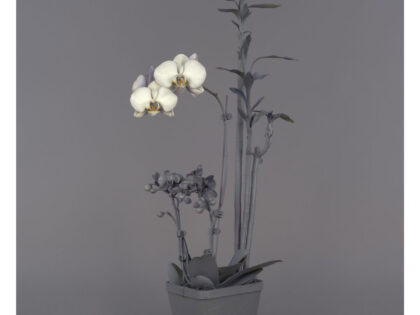Stephanie Syjuco Goes Full Color
The politics of color photography explored in new exhibit
There’s a colorchecker at the center of Stephanie Syjuco’s collage Pileup (Brass Bells). It’s 24 squares of color contained within a black frame.
The artist arranges sheaves of paper, journals, letters and photographs around the colorchecker to create a disorderly narrative. If there’s a plot, the world’s greatest detective might be able to piece together clues relating to the discovery of musical artifacts.
A version of the colorchecker fills up the entire wall next to the front door of the Anderson Collection. It also appears in other playful formats, behind and next to photographs, and mounted alone on a gallery wall as a large format poster crumpled around the edges, as if someone had rescued it from a rubbish bin. Throughout Syjuco’s exhibit White Balance/Color Cast, the eye is repeatedly drawn to it.
In a recent phone interview, Syjuco explains that color bars like these are edited out of published photos.
“Most studio photographers use these color calibration charts to make sure they have a standard or correct color locked into the image,” she says.
But when photography was invented, she adds, the color bars were skewed.
“This might sound like a leap or a metaphor but I’m trying to make the case that photography is like any other medium. It’s biased because of its racist structures.”
Stephanie Syjuco in conversation with Stanford art historian Kim Biel at the Anderson Collection
White Balance/Color Cast delves into the history of photography by challenging the idea of correct and incorrect color.
“It turns out that early film was not good at capturing dark skin tones,” Syjuco says. “This actually affected how photography has represented racialized people.” When she uses the color bar in her work, it becomes a “weird interruption into what you’re seeing.”
The Anderson exhibit is almost a small retrospective of Syjuco’s work. She and the curators wound up choosing pieces from approximately eight different projects that span different times and cover different themes. The oldest work in the show is from ten years ago, the Cargo Cults series, which are restaged ethnographic portraits. Works culled from the Native Resolution exhibit were produced in 2021. In thinking loosely about a theme, color was the common denominator. The curatorial team asked the questions, “What fits in there? What also makes for an interesting variety using color as subject matter?”
Syjuco herself appears in black and white photographs from the Cargo Cults series. In Head Bundle, she casts herself in patterned garments against contrasting patterns on the wall behind her.
“I didn’t want to subject someone else to some of these tropes,” Syjuco says. “When I was styling the images and playing with them, I felt it was safer to stay within my own level of responsibility in making them. I was more interested in the projection the viewer would put on this character, as being exoticized or ethnicized.”
Far from a reflection of how she sees herself as a Filipino, Syjuco says Cargo Cults is instead a commentary on a specific style of ethnographic photography that she believes blurs together for the general public.
“The photographs become markers of a ‘different culture’ to gaze at, a curious or beautiful ‘other’—but positioned against a modern Western norm.”
One of her reference points is Guillermo Gómez-Peña and Coco Fusco’s The Couple in the Cage.
“They dressed up as fake indigenous people and put themselves in a cage,” Syjuco recalled. “It was a performance where people thought they were real ‘savages.’ The idea was to play on the expectation of what that looked like.”
Syjuco describes herself as a visual artist.
“I’m trying to find the medium that best fits the idea,” she says. Whether that’s installation, photography or social practice projects. Each method of making an artwork keeps her engaged.
“In the last five to ten years, I’ve been working more in photography, which has its own language and history.”
When she was younger, some people were confused by the range of media Syjuco worked in. The good news is that, as evidenced in this exhibit, contemporary art practice can actually be generated in any number of different, exciting ways.
White Balance/Color Cast
Through March 5
Anderson Collection, Stanford





